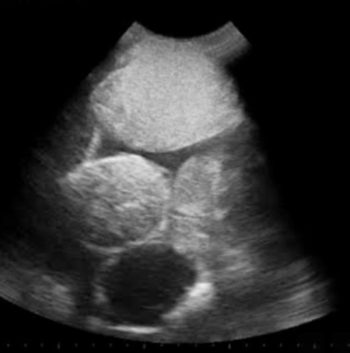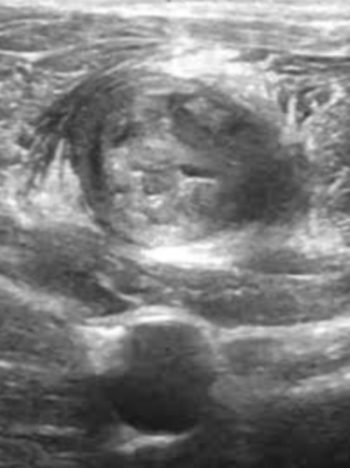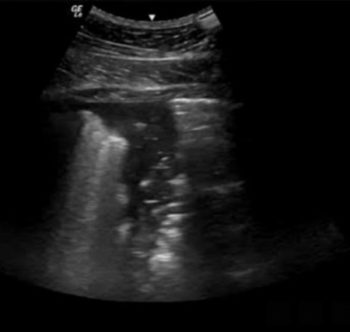28 May 2024
Kate Loomes looks at the various issues that can arise and addresses the risk factors that can be involved.

Image © Valeri Vatel / Adobe Stock
Perioperative complications contribute to equine morbidity and mortality, and are a significant concern for horse owners and veterinary surgeons alike. Postoperative complications can prolong recovery, increase cost, decrease the quality of life for the patient and negatively impact survival (Tyma and Epstein, 2023).
A spectrum of perioperative complications in horses undergoing procedures under general anaesthesia have been reported, ranging from transient mild conditions to those that become life-threatening.
This review aims to discuss the most common postoperative complications reported in horses and any associated risk factors. Awareness of such morbidities and the risk factors might aid in early recognition and prompt treatment, which might result in improved outcomes.
Gastrointestinal complications are the most commonly reported type of postoperative morbidity in horses. Gastrointestinal-related complications reported in horses after surgery, which does not involve the gastrointestinal tract include: colic (Borland et al, 2017; Senior et al, 2006), diarrhoea (Borland et al, 2017; Jago et al, 2015) and delayed faecal output (Pezzanite et al, 2021).
Gastrointestinal complications reported after abdominal or colic surgery include postoperative ileus (Cohen et al, 2004; Driscoll et al, 2008), haemoperitoneum (Driscoll et al, 2008) and peritonitis (Garcia-Seco et al, 2005; Immonen et al, 2017).

Post-anaesthetic colic (PAC) is the most commonly reported postoperative complication and has been reported to occur in horses undergoing elective surgery, as well as those recovering from colic surgery (Borland et al, 2017; Senior et al, 2006; Ellis et al, 2008; Spadari et al, 2023). In horses undergoing elective surgery, such as ar throscopy, some studies reported a relatively low incidence of PAC, ranging from 0.2% (Borg and Carmalt, 2013) to 1.46% (Secor et al, 2018).
However, in studies where all types of elective surgery were included in the analysis, the rates of PAC were generally higher, ranging from 5.2% (Senior et al, 2006) up to 18.5% (Borland et al, 2017). Certainly, the methods used in different studies to diagnose colic might vary, which is likely to affect results and might explain the variation in findings.
It might be expected that the rate of PAC is higher in horses recovering from colic surgery. Two studies reported relatively low rates of PAC after colic surgery varying between 7% to 8.1% (McCarthy and Hutchins, 1988; Phillips and Walmsley, 1993). However, in horses undergoing specific types of colic surgery such as small intestinal resection, a much higher rate of 60.9% was detected (Morton and Blikslager, 2002). Similarly, in horses recovering from jejunojejunostomy, Semevolos et al (2002) reported a PAC rate of 56%.
One study that specifically investigated risk factors for postoperative complications after colic surgery reported that the risk of suffering colic postoperatively was significantly and strongly associated with large colon torsion (more than 360°), and relaparotomy (French et al, 2002). Diarrhoea or colitis has been reported to occur in the postoperative period in both horses undergoing non-abdominal surgery and colic surgery. It might be anticipated that horses undergoing abdominal-related surgery might experience a higher rate of postoperative diarrhoea. This is indeed reflected in the findings in the literature, with a reported incidence of diarrhoea in horses after non-abdominal surgery somewhere between 0.6% to 2.79% (Senior et al, 2007; Borland et al, 2017; Pezzanite et al, 2021).
A much higher rate of postoperative diarrhoea, nearly 70%, was reported in one study after colon surgery (Prange et al, 2010). Other studies involving horses undergoing all types of colic surgery reported postoperative diarrhoea in between 2.2% to 30% of horses (Cohen et al, 2004; Mair and Smith, 2005; Spadari et al, 2023). One study, which specifically investigated risk factors for the development of colitis in horses after colic surgery, reported that pelvic flexure enterotomy, postoperative leukopenia or leucocytosis and increased plasma lactate were significant risk factors associated with colitis (Givan et al, 2023).
In that study, colitis was diagnosed if postoperative diarrhoea and one or more of the following criteria were present: fever, leukopenia or ultrasonographic evidence of colon inflammation – colon wall thickness of more than 4mm (Givan et al, 2023). The conclusions that could be drawn from the results of that study suggested that colitis as a postoperative complication does not negatively impact survival to discharge, but is associated with longer hospitalisation compared with those without postoperative colitis (Givan et al, 2023).
Reduced faecal output might be anticipated postoperatively, considering the depressive effects of general anaesthesia and sedation on gastrointestinal motility. Little et al (2001) reported that 43.5% of horses undergoing elective surgery experienced reduced faecal output postoperatively. In contrast, another study found that in horses undergoing elective orthopaedic or ophthalmic surgery, the number of postoperative defecations was not significantly different from the physiologic values (Salciccia et al, 2019).
“Factors known to affect the risk of developing certain conditions should be considered, and horse owners should be counselled where necessary.”
In the same study, gastrointestinal sounds were significantly decreased after general anaesthesia compared to baseline, but the expected effect on faecal output was not seen in this study (Salciccia et al, 2019). When risk factors were examined, horses 5 years or older that underwent orthopaedic procedures of more than 60 minutes’ duration, and that did not receive phenylbutazone after surgery, were at significant risk for developing reduced faecal output postoperatively (Little et al, 2001).
Postoperative ileus after colic surgery has been frequently reported, but a wide range of rates has been reported in the literature. In horses after large colon surgery, one study reported that 3.3% of horses experienced postoperative ileus, which contrasts another study where 53% of horses had postoperative ileus after jejunal surgery (Semevolos et al, 2002). The precise nature of the colic surgery and the location of surgical lesion is likely to affect the rate of ileus suffered postoperatively. Investigation of risk factors found that PCV and the presence of a strangulating pedunculated lipoma were significantly associated with postoperative ileus after colic surgery (French et al, 2002).
Postoperative peritonitis after colic surgery is reported in the literature with rates ranging from less than 1% in some studies (Givan et al, 2023) up to 18.5% in others (Naylor et al, 2014). In the latter study, the majority of horses (72%) required a small intestinal resection, which might, in part, explain the higher rate of postoperative peritonitis given the likelihood for increased small intestinal permeability in lesions requiring resection (Naylor et al, 2014).

Catheter-associated problems, including jugular thrombosis and thrombophlebitis, are less frequently reported in horses after non-abdominal surgery compared to colic surgery (Senior et al, 2007; Borland et al, 2017; Ellis et al, 2008). After non-abdominal surgery under general anaesthesia, jugular thrombosis developed in 0.9% to 2% of horses (Senior et al, 2007; Borland et al, 2017), which is in contrast to a thrombosis rate of 5.8% to 8.4% in horses after colic surgery (Lankveld et al, 2001; Gandini and Giusto, 2023).
Different types of catheter material might affect thrombosis risk, but it is likely that the complication is multifactorial. When polytetrafluoroethylene catheters were compared to polyurethane catheters in horses undergoing colic surgery, the rate of thrombosis was not different (Lankveld et al, 2001). However, this study did find that dwell time was significantly longer in horses that developed thrombophlebitis compared with those that did not; furthermore, the authors concluded that state of debilitation is an important factor for the occurrence of thrombophlebitis (Lankveld et al, 2001).
These findings are supported by another study where PCV had an approximately linear relationship with the risk of developing jugular thrombosis after colic surgery (French et al, 2002). The same study also found an association between jugular thrombosis and a heart rate at admission of more than 60 beats per minute (French et al, 2002). While these factors might be difficult to avoid or control for, awareness of these factors may encourage increased vigilance in “at-risk” patients.
Catheter-associated air embolism has been infrequently reported after surgery in horses. One case report described a horse that experienced postoperative air embolism of the brain after a jugular catheter accidentally became disconnected from the extension set (Hritz et al, 2022). The horse suffered neurological sequelae and was ultimately euthanised. Postmortem examination showed generalised cerebral oedema, gross malacia and haemorrhage consistent with air emboli (Hritz et al, 2022).
Fever or pyrexia can occur postoperatively in horses after a range of surgical procedures performed under general anaesthesia. After arthroscopy, rates of 0.37% to 5.1% have been seen (Pezzanite et al, 2021; Secor et al, 2018) in contrast to post-castration fever, which occurred in more than 20% of horses (Kummer et al, 2009).
Rates of postoperative fever as high as 79% to 85% have been reported in horses after colic surgery (Prange et al, 2010; Freeman et al, 2012). The nature of the surgery and any pre-existing systematic compromise might be likely to affect the rate of postoperative fever. One study specifically examined the relationship between postoperative fever and postoperative infection after colic surgery, and found that a peak temperature more than 39.2°C, the timing of the peak temperature after surgery and duration of pyrexia significantly affected infection rates (Freeman et al, 2012). This study distinguished between different grades of pyrexia, which allowed further analysis of the significance of pyrexia grade or severity.
Postoperative complications affecting the respiratory system are reported by several authors, although the particular classification of respiratory morbidity varies between studies.
Pneumonia occurring after colic surgery was reported to affect 0.9% to 3.6% of horses in two studies (Gazzerro et al, 2015; Givan et al, 2023). Another study found that horses that experienced pneumonia after colic surgery were more likely to suffer postoperative fever and perioperative reflux compared to their matched controls (Tyma and Epstein, 2023).

Cough, aspiration pneumonia and nasal discharge were experienced by 1.3% of healthy horses undergoing arthroscopy under general anaesthesia in one retrospective study (Pezzanite et al, 2021), which was a little higher than the results of another retrospective study, in horses after elective arthroscopy, where 0.68% experienced respiratory complications, including pneumonia or mild respiratory infection (Borg and Carmalt, 2013).
Pulmonary oedema is an uncommon, but potentially life-threatening, condition in horses (Shnaiderman-Torban et al, 2023). In a study using case-matched controls, gastric reflux and fresh frozen plasma administration during general anaesthesia were associated with postoperative pulmonary oedema (Shnaiderman-Torban et al, 2023).
Tracheal injury is also relatively uncommon, with only a handful of reported cases. Four horses experienced sloughing of the tracheal mucosa postoperatively in one retrospective study of 1,067 horses (Jago et al, 2015). Tracheal trauma and secondary pneumonia occurred in two horses thought to result from movement of the endotracheal tube during neck manipulation for myelography (Rainger et al, 2006; Díaz et al, 2022). Tracheal rupture occurred in another horse after the endotracheal tube was removed with the cuff inadvertently left partially inflated in recovery (Miller and Auckburally, 2020).
Postoperative complications affecting the musculoskeletal system might include varying grades of lameness, myopathy, neuropathy, myelomalacia and laminitis.
Lameness persisting into the postoperative period after elective arthroscopy occurred in 11% of horses in one study, while another reported a much lower rate of lameness (0.74%) after synovial endoscopy (Secor et al, 2018; Pezzanite et al, 2021). However, the degree of lameness might not be comparable between studies, making it difficult to draw conclusions.
Myopathy and neuropathy might be difficult to distinguish, or might co-exist in some affected horses. Myopathy after colic surgery has been reported to affect between 0.4% to 3.7% of horses (Mair and Smith, 2005; Gandini and Giusto, 2023). Another study found a similar rate of postoperative myopathy or neuropathy in horses after elective surgery, reporting a rate of 0.8% (Jago et al, 2015).
The aetiology of postoperative myopathy and neuropathy has been extensively investigated. When considering risk factors for the development of myopathy or neuropathy, one study hypothesised that horses undergoing anaesthesia for MRI would experience a higher frequency of postoperative myopathy or neuropathy compared to those undergoing anaesthesia for surgery (Franci et al, 2006). However, no such association was found, but the study did show that overall, horses that experienced postoperative myopathy or neuropathy were significantly heavier than those that did not (Franci et al, 2006). In total in this study, 1.72% of horses experienced clinical signs consistent with myopathy or neuropathy in the postoperative period (Franci et al, 2006).
In earlier studies, hypotension, poor positioning and prolonged anaesthesia have been identified as risk factors for postoperative myopathy or neuropathy (Richey et al, 1990; Young and Taylor, 1993; Raisis et al, 2000).
Laminitis in the postoperative period has been reported by several studies after colic surgery at a rate that ranges from 0.4% to 12% (Mair and Smith, 2005; Givan et al, 2023; Morton and Blikslager, 2002). Risk factors for the development of laminitis after colic surgery were examined by one study, but the only factor that significantly increased the risk of laminitis was the absence of low molecular weight heparin (LMWH) therapy (De La Rebière de Pouyade et al, 2009).
The study was retrospective and not randomised, so comparisons made between horses receiving or not receiving LMWH might be hindered by the different time frames during which the horses were treated.
However, the results of this study are important to encourage prospective evaluation and further investigation into such preventive therapies. After orthopaedic surgery, in a large study of 3,500 horses, only 23 experienced postoperative laminitis (Widmer et al, 2009). However, support limb laminitis has been reported to occur after some surgical procedures, which necessitates prompt diagnosis and appropriate management (Federici et al, 2019).
“By improving awareness of potential complications, early recognition and treatment might improve outcomes.”
Cerebral necrosis has been infrequently reported in the literature. One small case series of five horses that experienced signs of postoperative cerebral necrosis developed clinical signs between five hours and seven days after general anaesthesia (McKay et al, 2002).
The authors discussed that periods of intraoperative hypercapnia and hypoxaemia may be significant and that four of the five affected horses underwent colic surgery in dorsal recumbency. In contrast, another case report described postanaesthetic cerebral necrosis in a healthy pony undergoing elective castration (Spadavecchia et al, 2001).
In this particular case, abnormal neurological signs were seen shortly after the end of anaesthesia (Spadavecchia et al, 2001). The low number of reported cases makes it difficult to extract risk factors.
Spinal cord myelomalacia or myelopathy is uncommonly reported. A recent review explored the potential aetiology, but to date, the precise mechanism is unclear (Viilmann et al, 2022).
One case report described the clinical signs of post-anaesthetic myelopathy to include inability to stand, flaccid paralysis of hindlimbs, absence of reaction to an induced pain stimulus on the hindlimbs, no patellar or anal reflex present, weak tail tone and absent panniculus reflex distally from the 17th intercostal space (Patschova et al, 2014). The incidence of myelomalacia is hard to estimate given the paucity of reported cases.
A prospective study involving 34 healthy horses undergoing general anaesthesia for elective non-ocular surgery reported that 17.6% of horses developed corneal abrasions (Scarabelli et al, 2018).
This study identified that duration of anaesthesia, total length of recumbency and lateral recumbency were risk factors for corneal abrasion (Scarabelli et al, 2018).
After elective arthroscopy, the incidence of incisional infection appears to be relatively low, with two studies reporting similar results of rates between 0.6% and 0.7% (Borg and Carmalt, 2013; Merchán et al, 2022).
The reported rate of joint infection or sepsis after elective arthroscopy also seems to be low, with rates ranging between 0.7% and 1.2% (Borg and Carmalt, 2013; Secor et al, 2018; Merchán et al, 2022).
In contrast, incisional complications after colic surgery are more common (Kelmer et al, 2023). Complications encountered include oedema, infection, hernia and dehiscence (Kelmer, 2023). The rate of incisional infection after colic surgery might be as high as 43% (Freeman et al, 2012). Risk factors for abdominal incisional site infection have been reviewed extensively elsewhere, and readers are directed reviews by Salem et al (2016) and Kelmer (2023).
Equine anaesthesia is not without risk, and a variety of postoperative complications are known to occur.
By improving awareness of potential complications, early recognition and treatment may improve outcomes. Factors known to affect the risk of developing certain conditions should be considered, and horse owners should be counselled where necessary.
This narrative review aimed to discuss some of the most common postoperative complications and provide an idea of the latest reported incidence rates.